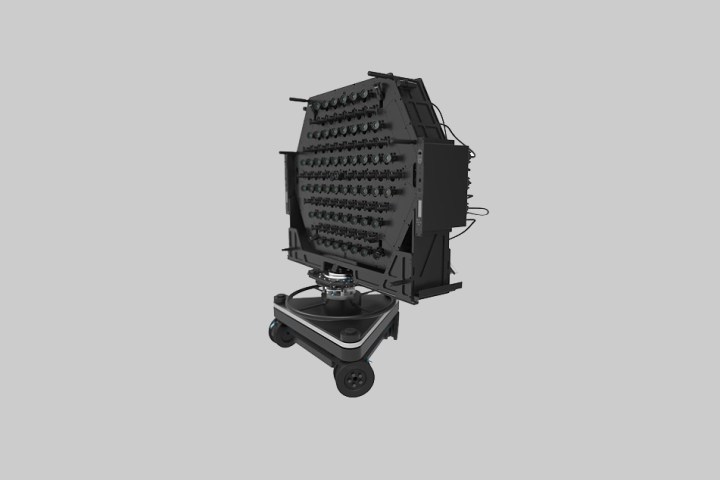
The Immerge was the first VR camera capable of capturing live Six Degrees of Freedom — in VR speak, that means when the Immerge is behind that video, you can move forward, backward, up, down, left and right within that video, creating true VR rather than just a 360 video you can watch from one fixed position. The original Immerge uses 95 light field cameras that capture the angle and direction of the light in order to create that 3D scene.
The Lytro Immerge 2.0 still uses a huge number of cameras on a hexagon-shaped body several feet tall. But, to enhance the camera’s capabilities, those lenses move from 90-degree views to 120 degrees. Since the camera rotates to capture an entire 360-degree scene, the wider angle of view means the camera can capture the scene in three spins rather than five. The wider angle of view is achieved by using a similar pattern of cameras, but offsetting each row so one row is pointing in a different direction than the next. The offset helps create that wider viewing angle.
Lytro also improved the Immersion 2.0 with more efficiency and flexibility. The Immerge system is both camera and software, and Lytro is also working to improve that end too — updated software is allowing the camera to pull more data from the light field cameras to bump up the quality. And according to Road to VR, Lytro is ready to take the quality up to 10K per eye as soon as VR headsets gain more resolving power.
While you’ll have to wait to find out exactly what VR from the Immerge 2.0 looks like, Lytro has released a number of recent projects that were shot from the original light field VR camera. In conjunction with The New York Times, the Lytro 1.0 recently shot a personal essay exploring the sensation of hearing for the first time. Headset users can also explore Leonard Cohen’s Hallelujah in VR, or go back even further to Lytro’s earlier teaser that re-created the moon landing.




